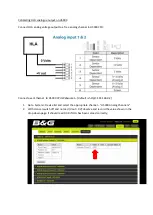
IMCA M 229
1
1
Preface
Reliable and robust methods of positioning are required for safe vessel operations at offshore installations.
The development of dynamic positioning (DP) systems has been gradual over the past 50 years and today, various
manufacturers’ systems are available around the world.
Every measurement technology is bound by limitations (i.e. physics) and external factors (e.g. signal obstruction,
solar activity, weather, sea conditions, range), which makes it difficult for one technology to cover all applications
with uninterrupted service. Hence the growth in the use of DP has been accompanied by the development of
internationally recognised rules, standards and guidelines against which DP vessels are designed, constructed and
operated.
1
2
3
The growth and development of DP systems has stimulated the development of DP position measurement
sensors which have become more sophisticated as technology has allowed. Within the relative position
measurement equipment range the DP market is familiar with the use of laser and microwave sensors.
4
5
6
7
This
document describes the Mini RadaScan product, which is part of the range of microwave relative positioning
systems offered by Guidance Marine (see
www.guidance.eu.com
).
IMCA has published IMCA M 209 –
RadaScan microwave radar sensor for dynamic positioning operations
. This
document provides an overview of the Mini RadaScan system.
1 IMO MSC Circ. 645 –
Guidelines for vessels with dynamic positioning systems
2
IMCA M 103
–
Guidelines for the design and operation of dynamically positioned vessels
3
182 MSF
–
International guidelines for the safe operation of dynamically positioned offshore supply vessels
4
IMCA M 170
–
A review of marine laser positioning systems – Part 1: MK IV Fanbeam® and Part 2: CyScan
5
IMCA M 174
–
A review of the Artemis Mark V positioning system
6
IMCA M 209
–
RadaScan microwave radar sensor for dynamic positioning operations
7
IMCA M 224
–
Guidance on RADius relative positioning system






































